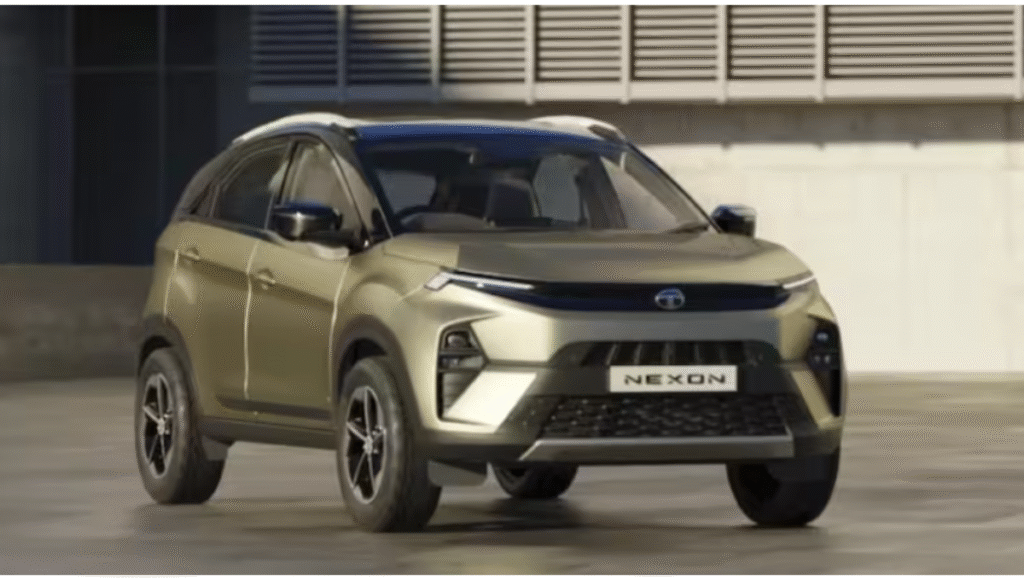
Tata Overtakes Mahindra & Hyundai and Hyundai in September 2025 Retail Sales
In India, cars are more than just a means of transport – they are a part of dreams, aspirations, and family milestones. September 2025 turned into a landmark month for Tata Motors, as the homegrown giant not only outpaced rivals Mahindra and Hyundai in passenger vehicle (PV) retail sales but also showed how the new GST 2.0 structure and festive offers are reshaping the auto market. While Maruti Suzuki continues to dominate the top spot, Tata’s leap forward reflects how a blend of affordability, innovation, and timing can win the trust of Indian buyers.
Tata’s Winning Numbers
According to official Vahan portal data, Tata Motors recorded 40,594 PV registrations in September 2025. This pushed it ahead of Mahindra, which registered 37,015 units, and Hyundai, which reported 35,443 units. Maruti Suzuki, the long-time leader in the Indian car market, continued to stay miles ahead with 1,22,278 units sold.
But for Tata, the story isn’t just about numbers. It is about how strategic price cuts under the GST 2.0 regime and additional festive offers allowed its popular lineup – Tiago, Altroz, Punch, Nexon, Safari, and more – to connect strongly with buyers across segments.
Price Cuts That Made Cars More Accessible
One of the biggest triggers for Tata’s sales surge was the significant price reduction across its ICE (internal combustion engine) cars. With GST rates revised, Tata passed on benefits of up to ₹1.55 lakh to customers. The Nexon, one of the company’s most popular SUVs, saw the maximum cut, making it an even more attractive choice for families looking for a stylish yet affordable vehicle.
Other models such as the Tiago, Altroz, Tigor, Punch, Harrier, Curvv, and Safari also witnessed substantial price reductions. For instance, the Tiago became cheaper by up to ₹75,000, while the Altroz saw a price drop of up to ₹1.11 lakh. The Harrier and Safari too became more appealing with cuts of up to ₹1.44 lakh and ₹1.48 lakh respectively.
Adding to this, Tata also introduced festive benefits of up to ₹65,000 in September. With the festive season already boosting customer sentiment, this double advantage of tax benefits and seasonal discounts gave Tata the edge it needed.
A Balanced Portfolio Driving Success
Tata’s ability to offer a wide range of vehicles has also played a major role in its growth. Its ICE lineup, spanning hatchbacks, sedans, and SUVs, is now more affordable, while its electric vehicle (EV) portfolio continues to grow. Models like the Tiago.ev, Tigor.ev, Punch.ev, Nexon.ev, and Harrier.ev are strengthening Tata’s EV presence, though GST rates on EVs remain unchanged at 5%.
This balance between traditional cars and EVs has positioned Tata as a strong contender in both segments, unlike some rivals who are still building their EV lineups.
The GST 2.0 Effect on the Auto Industry
The GST 2.0 regime has been a game-changer. For smaller ICE cars (sub-4 metre), the overall tax incidence has dropped to 18% as the compensation cess has been removed. Earlier, buyers paid between 29% to 31% in combined GST and cess.
For larger and luxury ICE cars, the tax now stands at 40%, compared to the previous range of 43% to 50%. While the cuts may appear modest, in absolute numbers they translate into massive savings for buyers, making cars more attractive across categories.
Interestingly, while Tata passed on significant benefits, its competitors also offered reductions – Mahindra cut prices by up to ₹1.56 lakh, Hyundai slashed up to ₹2.40 lakh, and Maruti up to ₹1.29 lakh. Yet, Tata’s ability to align discounts with festive cheer gave it an upper hand.
Looking Beyond Numbers
The sales figures are not just statistics; they mirror consumer sentiment. The combination of reduced prices, better affordability, and festive positivity encouraged more families to upgrade or purchase their dream car. For Tata, the September surge underscores its growing emotional connect with Indian households.
From the Tiago hatchback that appeals to first-time buyers to the Nexon SUV that resonates with young families, Tata’s product mix continues to deliver variety, reliability, and trust.
The Road Ahead
Maruti may still be the undisputed leader, but Tata’s performance shows that the Indian auto market is more competitive than ever. With Mahindra and Hyundai close behind, and EV adoption gradually gaining momentum, the coming months will be crucial for Tata to maintain this momentum.
The festive season, which has only just begun, could be the golden period for Tata to further strengthen its position. By balancing affordability with innovation, and ICE with EVs, Tata has shown that it is not just keeping pace with the competition but also steering ahead when it matters most.
Disclaimer
This article is based on publicly available information and industry reports. Sales numbers and price cuts are accurate as per the latest updates from September 2025. Readers are advised to check with official sources and dealerships for the most recent details before making any purchase decisions.





